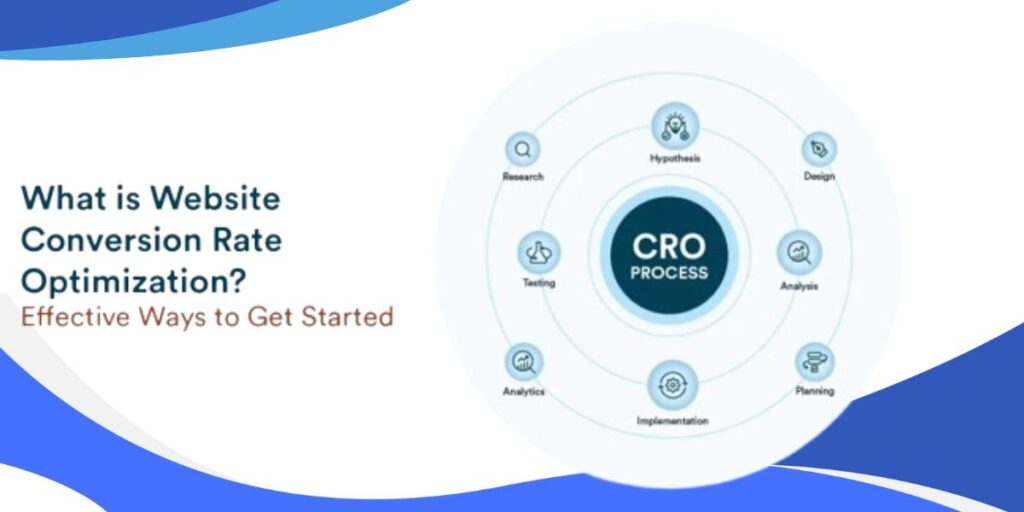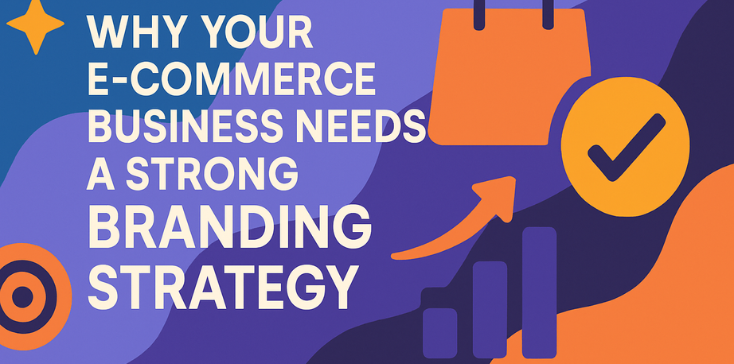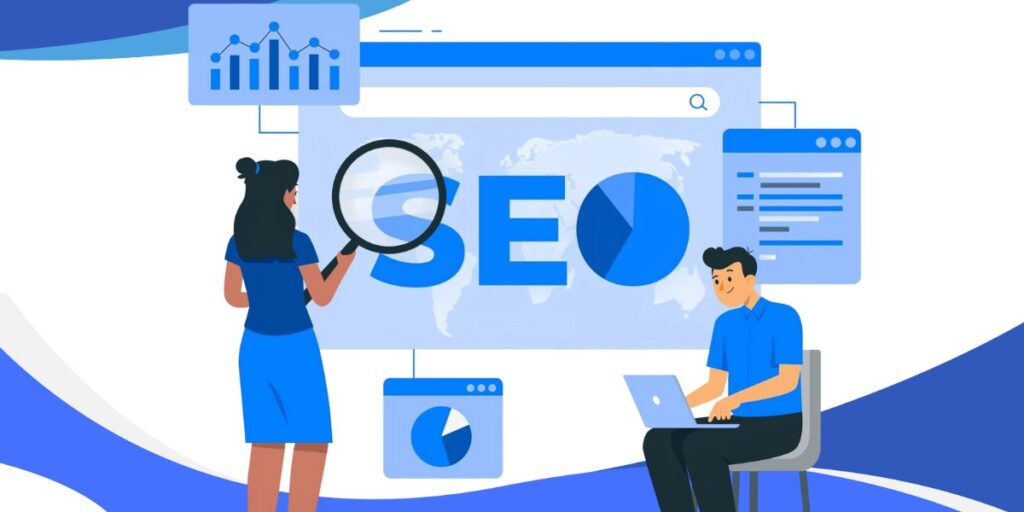Every online store wants more buyers, not just visitors. But if your site isn’t built to convert, you’re leaving money on the table. That’s where E-commerce conversion optimization comes in. It’s not just about attracting traffic, it’s about converting that traffic into loyal, paying customers.
In this comprehensive guide, we’ll walk you through powerful strategies to optimize your e-commerce store using smart design, better UX, and lightning-fast performance. Let’s dive into how to transform your store into a high-converting machine!
What is E-commerce Conversion Rate Optimization and Why Does It Matter?
Before making any changes, understand what e-commerce conversion rate optimization (CRO) really means. It’s the strategic process of improving your website to encourage more visitors to take specific actions like making a purchase, subscribing to a newsletter, or adding items to their wishlist.
The e-commerce conversion rate formula is:
(Total Conversions ÷ Total Visitors) x 100
For example, if your site gets 10,000 visitors a month and 300 purchases, your conversion rate is:
(300 ÷ 10,000) x 100 = 3%
According to industry benchmarks, the average ecommerce conversion rate by industry varies between 1% and 4%, depending on your niche.
Instead of focusing solely on generating traffic, start optimizing for conversions. A 1% increase in conversion rate can drive huge revenue without increasing your ad spend.
Improve UX to Drive E-commerce Conversion Optimization
Great UX for online stores is like having an invisible salesperson. If your website is easy to use, pleasant to browse, and intuitive to navigate, users are more likely to stay and buy.
To boost your e-commerce conversion rate optimization:
- Use clear navigation menus and product categories.
- Implement advanced filters for large inventories.
- Provide a search function that delivers relevant results.
- Keep the design clean and mobile-responsive.
A seamless user experience reduces friction and builds trust, key factors in improving your e-commerce conversion rate.
Increase Conversions by Enhancing Website Speed for E-commerce
If your site takes more than 3 seconds to load, most users will bounce. Google research shows that bounce rates increase by 32% as page load time goes from 1 to 3 seconds.
To speed up your e-commerce website:
- Compress large image files without losing quality.
- Use browser caching and a Content Delivery Network (CDN).
- Choose a fast and secure hosting provider.
- Run tests using tools like Google PageSpeed Insights.
Faster loading times mean improved UX and higher conversions, a double win for e-commerce website optimization.
Mobile Conversion Optimization is a Must for 2025 and Beyond
With over 250 million Indians shopping online, and that number expected to hit 425 million by 2027, optimizing your e-commerce site for mobile is no longer optional.
Here’s how to implement mobile ecommerce conversion optimization:
- Use a responsive website design that fits all screen sizes.
- Ensure buttons and CTAs are touch-friendly.
- Simplify your checkout with autofill and minimal form fields.
- Offer mobile-exclusive discounts to encourage sales.
If your site isn’t mobile-friendly, you risk losing out on massive conversions.
Streamline Your Checkout Flow for a Higher E-commerce Conversion Rate
Complicated checkout processes are one of the biggest conversion killers. A streamlined checkout experience plays a critical role in e-commerce conversion rate optimization.
Tips to optimize your checkout:
- Enable guest checkout.
- Be transparent with shipping costs upfront.
- Minimize the number of steps to complete a purchase.
- Offer secure payment options and show trust badges.
Make it easy, quick, and secure, and watch your conversion rate grow.
Craft Product Pages That Convert Visitors into Buyers
Your product pages are make-or-break when it comes to E-commerce conversion optimization. A well-designed product page can trigger impulse purchases, while a poor one drives users away.
Make your product pages sell:
- Use high-quality product images and 360° views.
- Write compelling, keyword-rich product descriptions.
- Add trust-building elements like reviews, FAQs, and product videos.
- Include clear and visible CTAs like “Buy Now” or “Add to Cart.”
A killer product page doesn’t just improve UX for online stores; it significantly boosts your e-commerce conversion rate.
Leverage A/B Testing to Improve E-commerce Conversion Rate
A/B testing for e-commerce is a powerful way to discover what really works for your audience. Test variations of:
- Headlines
- CTA button text and color
- Product image placement
- Layouts and checkout designs
Use tools like Optimizely or VWO to run these experiments. Complement A/B testing with heatmaps from Hotjar to better understand user behavior.
This data-driven approach leads to smarter ecommerce conversion rate optimization decisions.
Build Trust with Social Proof and Money-Back Guarantees
Trust is a key factor in online buying decisions. The more trust signals you show, the more confident your visitors will feel.
Build credibility with:
- Verified customer reviews and ratings.
- Trust badges (SSL, secure payments, etc.).
- User-generated content (photos or testimonials).
- Clear refund policies and guarantees.
Trust-building elements help reduce hesitation and increase your e-commerce conversion rate, especially in competitive industries.
Use Email Marketing and Remarketing to Recover Lost Sales
Not every visitor converts right away, but with smart email capture and remarketing, you can bring them back.
To maximize long-term E-commerce conversion optimization:
- Offer a discount in exchange for joining your email list.
- Send abandoned cart reminders with personalized incentives.
- Use Klaviyo or Mailchimp for targeted campaigns.
A strong email strategy recaptures lost opportunities and improves lifetime customer value.
Track Metrics, Analyze Behavior, and Keep Optimizing
Ongoing improvement is essential for successful E-commerce website optimization. Use tools like:
- Google Analytics
- Shopify Analytics
- Hotjar for behavior tracking
Key metrics to monitor:
- Bounce rate
- Average session duration
- Conversion rate by device
- Cart abandonment rate
Continuous improvement helps you align your strategy with real user behavior and outperform your competition.
Final Thoughts: Start Your E-commerce Conversion Optimization Journey Now
Improving your store isn’t about gimmicks; it’s about crafting an experience that’s fast, enjoyable, and trustworthy. With the right focus on UX, website speed, product page optimization, and data-backed decisions, your site can evolve from just an online store into a conversion powerhouse.
Start optimizing today, or let the team at Growwithba help you double your ecommerce conversions.
FAQs: E-commerce Conversion Rate Optimization
How do I optimize my e-commerce website for conversions?
Focus on user experience, mobile responsiveness, site speed, SEO, and trust elements. Implement A/B testing and review analytics regularly.
How to increase e-commerce conversion rate effectively?
Simplify checkout, offer free shipping, use persuasive product pages, optimize for mobile, and personalize emails.
What is the e-commerce conversion rate formula?
Conversion Rate = (Total Conversions ÷ Total Visitors) x 100. This formula helps track performance and identify growth opportunities.
What is the average e-commerce conversion rate by industry?
According to Ruler Analytics, the average ecommerce conversion rate ranges from 1.5% to 4.5%, depending on the industry. Fashion and electronics tend to convert lower, while health and beauty convert higher.
![BA LOGO 2[1] Logo](https://growwithba.com/wp-content/uploads/elementor/thumbs/BA-LOGO-21-rctdwc6e44k0gscol760abdhmupxvrcikanaiw5kow.png)



